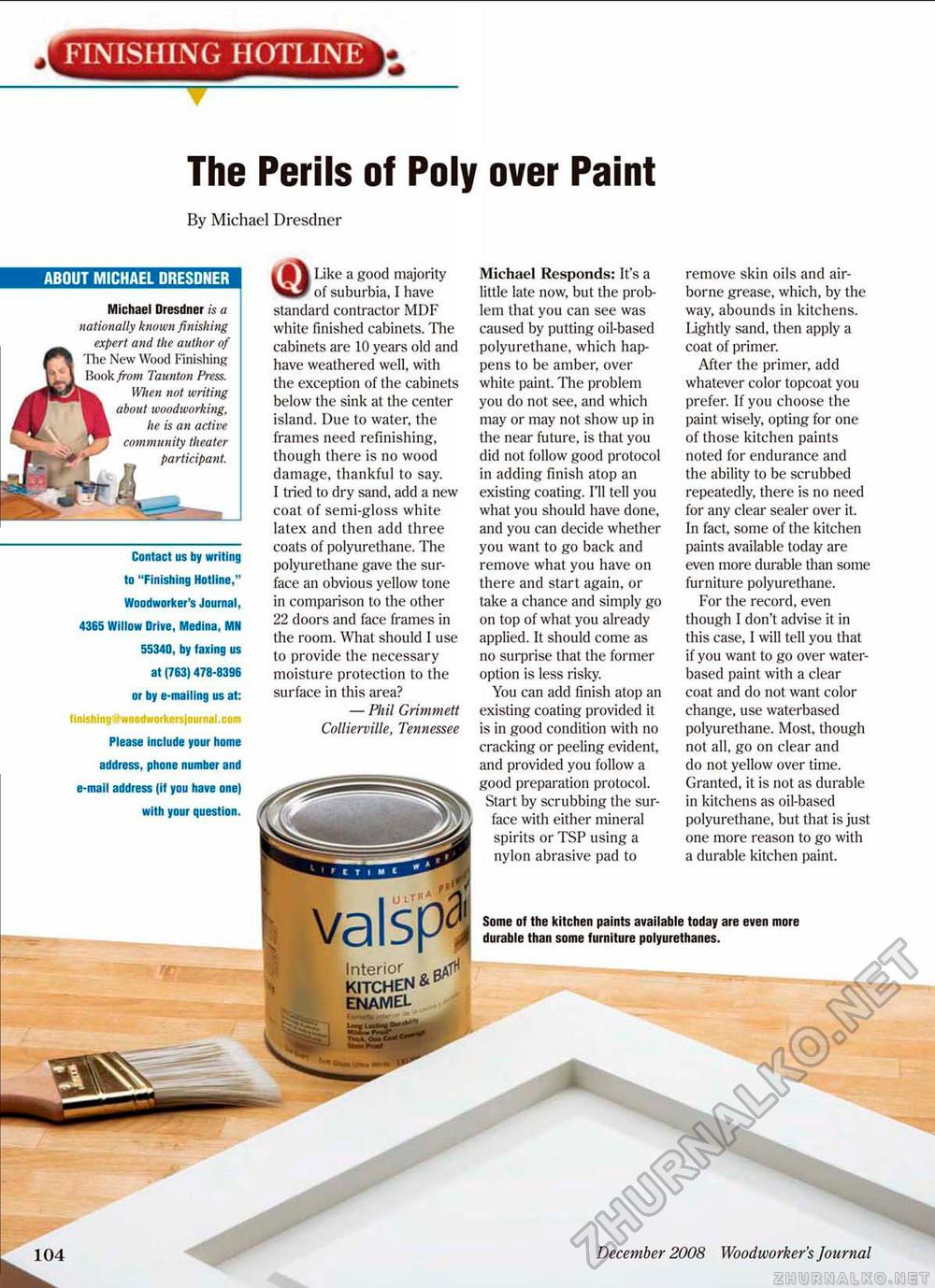Woodworker's Journal 2008-32-6, страница 105
FINISHING HOTLINE The Perils of Poly over Paint By Michael Dresdner ABOUT MICHAEL DRESDNER Michael Dresdner is a nationally known finishing expert and the author of The New Wood Finishing Book from Taunton Press. When not writing about woodworking, he is an active community theater participant. Contact us by writing to "Finishing Hotline," Woodworker's Journal, 4365 Willow Drive, Medina, MN 55340, by faxing us at (763)478-8396 nr by e-mailing us at: I i nish In g® w n Dd nrke rs jo ura al. ca n Please include your home address, phone number and e-mail address (if you have one) with your question. iftj Like a good majority of suburbia, 1 have standard contractor MDF white finished cabinets. The cabinets are 10 years old and have weathered well, with the exception of the cabinets below the sink at the center island. Due to water, the frames need refinishing, though there is no wood damage, thankful to say. 1 tried to dry sand, add a new coat of semi-gloss white latex and then add three coats of polyurethane. The polyurethane gave the surface an obvious yellow tone in comparison to the other 22 doors and face frames in the room. What should I use to provide the necessary moisture protection to the surface in this area? — Phil Grimmett Coltiervilie, Tennessee Interior , kitchen ENAMEL Michael Responds: It's a little late now, but the problem that you can sec was caused by putting oil-based polyurethane, which happens to be amber, over white paint. The problem you do not see, and which may or may not show up in the near future, is that you did not follow good protocol in adding finish atop an existing coating. I'll tell you what you should have done, and you can decide whether you want to go back and remove what you have on there and start again, or take a chance and simply go on top of what you already applied. It should come as no surprise that the former option is less risky. You can add finish atop an existing coating provided it is in good condition with no cracking or peeling evident, and provided you follow a good preparation protocol. Start by scrubbing the surface with either mineral spirits or TSP using a nylon abrasive pad to remove skin oils and airborne grease, which, by the way, abounds in kitchens. Lightly sand, then apply a coat of primer. After the primer, add whatever color topcoat you prefer. If you choose the paint wisely, opting for one of those kitchen paints noted for endurance and the ability to be scrubbed repeatedly, there is no need for any clear sealer over it. In fact, some of the kitchen paints available today are even more durable than some furniture polyurethane. For the record, even though I don't advise it in this case, I will tell you that if you want to go over water-based paint with a clear coat and do not want color change, use waterbased polyurethane. Most, though not all, go on clear and do not yellow over time. Granted, it is not as durable in kitchens as oil-based polyurethane, but that is just one more reason to go with a durable kitchen paint. Snme of the kitchen paints available today are even more durable than some furniture polyurethanes. 104 December 2008 Woodworker's Journal |








